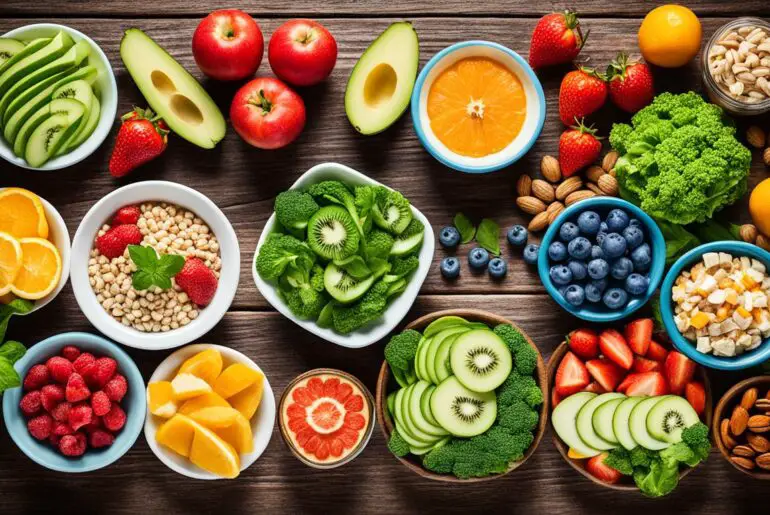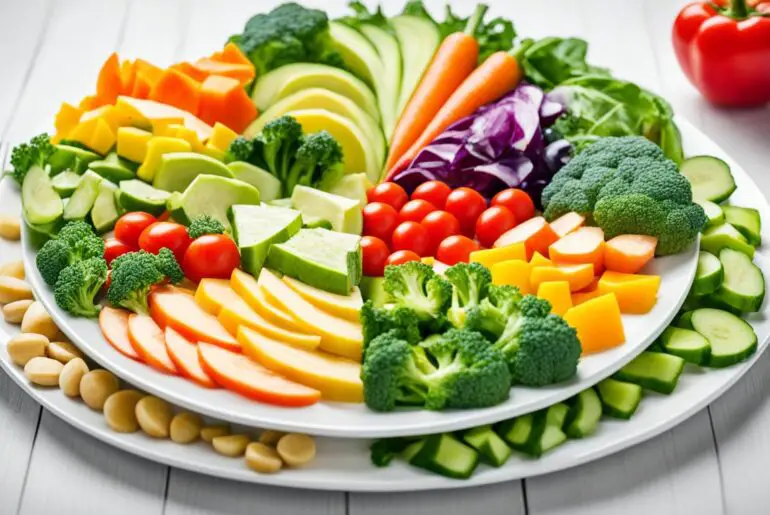Did you know that the loading phase of the HCG diet is a crucial step for successful weight loss? During this phase, individuals are encouraged to consume high-fat foods to fill up their fat stores, setting the stage for the low-calorie phase ahead.
By indulging in high-calorie foods, you might be wondering how this can actually aid in weight loss. The loading phase helps alleviate hunger during the low-calorie phase and prepares the body for utilizing stored fat for energy. It’s an essential part of the HCG diet that shouldn’t be overlooked.
Key Takeaways:
- The loading phase involves consuming high-fat foods to fill up fat stores
- It helps alleviate hunger during the low-calorie phase
- Properly following the loading phase is crucial for successful weight loss on the HCG diet
- The HCG hormone builds up in the bloodstream during the loading phase
- Weight gain during this phase is temporary and will be quickly lost once the low-calorie phase begins
Why is the Loading Phase Necessary?
The loading phase, also known as the gorge phase, serves two main purposes in the HCG diet. First, it allows the HCG hormone to build up in the bloodstream over the course of 48-72 hours. Second, it helps fill up the fat stores in the body. By preparing the body in this way, it feels safe going into the low-calorie phase of the diet. The loading phase is an essential step for the successful transition into the weight loss phase of the HCG diet.
How to Do the Loading Phase
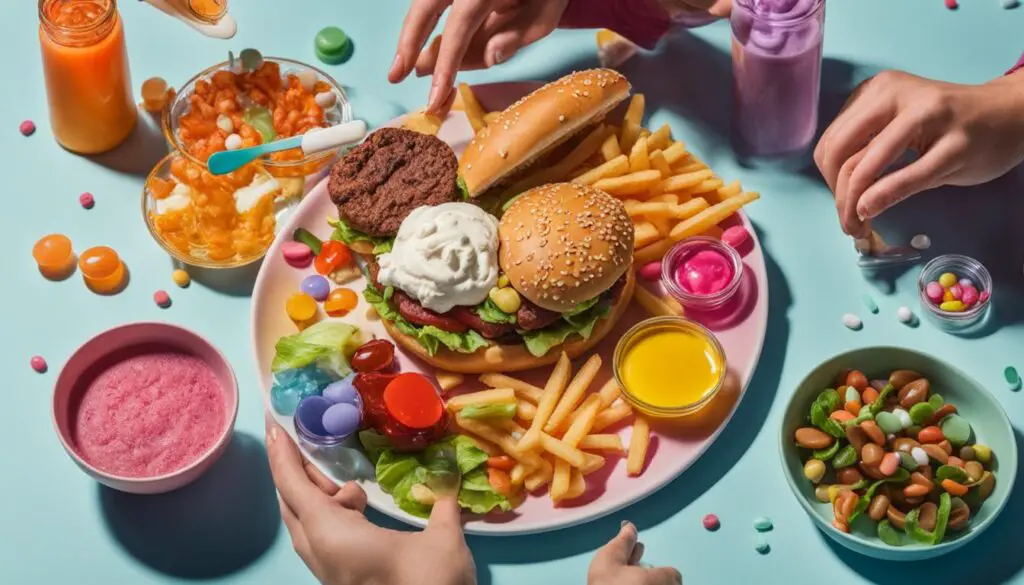
The loading phase is a crucial part of the HCG diet and typically lasts for 2-3 days, although some individuals may choose to extend it to 3 days or more. During this phase, it is important to follow specific guidelines to ensure its effectiveness.
First and foremost, it is essential to take the HCG injections as prescribed by your healthcare provider. The recommended dosage for most individuals is between 125iu and 150iu. These injections play a vital role in kick-starting your weight loss journey.
In terms of food, the focus during the loading phase should be on consuming high-fat and high-calorie foods. This helps fill up your fat stores, which will be utilized during the low-calorie phase of the diet. Indulging in foods like bacon, sausages, eggs, pastries, fast food, and full-fat dairy products is encouraged.
However, it is important to listen to your body and eat until you are comfortably full without overeating. The goal is not to gorge on unhealthy foods but to consume enough to prepare your body for the upcoming low-calorie phase.
Remember, the loading phase is not a free pass to indulge excessively, but rather a strategic step to set the stage for successful weight loss. Finding a balance between enjoying high-fat foods and maintaining control over your portions is key to maximizing the benefits of this phase.
By following these guidelines and being mindful of your body’s signals, you can effectively navigate through the loading phase and lay a solid foundation for your HCG diet journey.
What to Expect During the Loading Phase
During the loading phase of the HCG diet, it is common to experience temporary weight gain. This weight gain is a result of the increased calorie intake during the loading days. However, there is no need to worry as this weight will be quickly lost once the low-calorie phase begins.
Everyone’s experience during the loading phase may vary. Some individuals may find that they do not have a significant increase in appetite, while others may feel hungrier and consume larger amounts of food. It is important to find a balance and not overeat to the point of feeling sick or uncomfortable.
Staying hydrated is vital during the loading phase. Drinking plenty of water helps with the digestion process and prevents dehydration. Aim to drink at least 8 glasses of water per day to stay properly hydrated.
As I prepared for the low-calorie phase, I noticed a temporary weight gain during the loading phase. But I trusted the process and stayed committed to the diet. Soon enough, the weight started to come off, and I felt energized and ready for the next phase.
Remember to listen to your body and its signals. Eat until you are comfortably full without feeling overly stuffed. This will help regulate your food intake and prevent unnecessary discomfort.
Now, let’s take a look at a visual representation of the HCG diet loading phase:
| Expectations During the Loading Phase | Actions to Take |
|---|---|
| Temporary weight gain | Stay committed to the diet; the weight will be lost once the low-calorie phase begins |
| Varying appetite levels | Find a balance in food intake; avoid overeating and feeling sick |
| Hydration | Drink plenty of water to stay hydrated and aid in digestion |
As you progress through the HCG diet, be aware of these expectations during the loading phase. Stay focused and motivated, knowing that this phase is a crucial part of setting the stage for successful weight loss.
Tips for a Successful Loading Phase

To have a successful loading phase on the HCG diet, it is important to focus on incorporating healthy high-fat foods into your meals. These foods will help you fill up your fat stores and prepare your body for the low-calorie phase of the diet. Here are some tips to make the most out of your loading days:
- Choose healthy fats: Opt for full-fat organic dairy products, avocados, nuts, salmon, olives, and nut butters. These foods provide essential nutrients and healthy fats to fuel your body.
- Moderation is key: While indulging in high-fat foods is encouraged during the loading phase, it is important to keep indulgences to a minimum. Avoid going overboard with unhealthy processed foods and instead focus on nourishing your body with nutrient-dense options.
- Stay hydrated: Drinking an adequate amount of water is crucial during the loading phase. Aim to drink 80-120 ounces of water per day to support your body’s functions and promote optimal hydration.
- Listen to your body: Pay attention to your body’s signals of hunger and fullness. Eat until you are comfortably full without feeling sick. Remember, the goal is to fill up your fat stores, not to overeat excessively.
“During the loading phase, focus on incorporating healthy high-fat foods into your meals to prepare your body for the low-calorie phase of the HCG diet.”
The image above illustrates the importance of the loading phase in the HCG diet.
The Importance of Weighing Yourself
Weighing yourself daily during the loading phase of the HCG diet is a crucial practice that can provide valuable insights into your progress. By tracking your weight regularly, you can observe the effects of the high-fat food consumption and understand the changes happening in your body.
During the loading phase, it is normal to see a temporary increase in weight due to the higher calorie intake. This weight gain is a result of the body storing the excess calories as fat. However, it’s important to remember that this increase is only temporary and will quickly be reversed once the low-calorie phase begins.
By weighing yourself every day, you can monitor your weight loss journey and stay motivated throughout the process. Seeing the numbers on the scale go down can provide a sense of accomplishment and reinforce your commitment to the diet.
“Weighing myself daily during the loading phase helped me stay focused and motivated. Seeing the weight drop after transitioning to the low-calorie phase was incredibly rewarding.” – Jennifer, HCG diet participant
Keep in mind that while weighing yourself is important, it’s essential to maintain a healthy perspective and not become obsessed with the numbers. The HCG diet is a holistic approach to weight loss, and the scale is just one measurement of your progress. Focus on how you feel, your energy levels, and the positive changes happening in your body.
| Benefits of Weighing Yourself | Guidelines for Weighing Yourself |
|---|---|
|
|
Remember, the goal of weighing yourself is to observe trends and progress over time, rather than focusing on daily fluctuations. Use this practice as a tool to track your journey and celebrate your achievements along the way.
Preparing for Phase 2
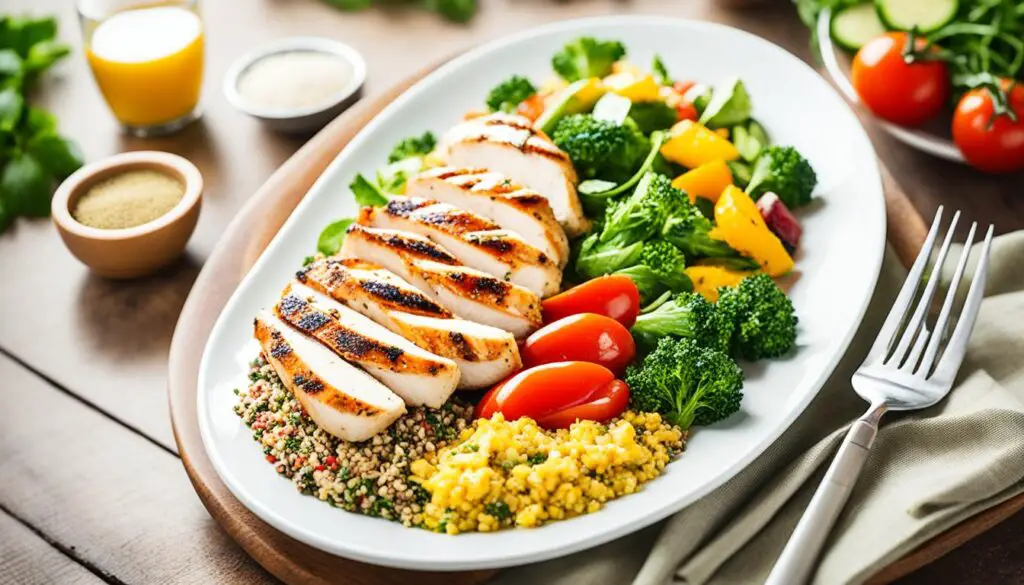
After completing the loading phase of the HCG diet, it’s time to transition into Phase 2. This phase involves following a very low-calorie diet while continuing with the HCG injections. To ensure a smooth transition, it’s important to be prepared and have a clear understanding of the foods that are allowed and not allowed during Phase 2.
Creating a meal plan and shopping list can be incredibly helpful. By mapping out your meals in advance, you can ensure that you have all the necessary ingredients on hand and can stick to the recommended calorie intake. A well-planned meal plan can also help prevent unnecessary cravings or impulse decisions.
During Phase 2, it’s essential to focus on lean proteins, vegetables, and fruits. Avoid high-fat and high-calorie foods that were consumed during the loading phase. It is also crucial to drink plenty of water to stay hydrated and support your body’s natural functions.
Additionally, it can be beneficial to familiarize yourself with portion sizes and proper cooking methods. By understanding serving sizes, you can ensure that you’re consuming the right amount of food for your body’s needs. Cooking methods such as grilling, baking, or steaming can help you prepare healthy and delicious meals without adding unnecessary fats or calories.
Remember, Phase 2 of the HCG diet is a commitment to your health and weight loss goals. By preparing in advance and having a clear understanding of the dietary guidelines, you can set yourself up for success in this phase.
The Transition to Phase 2
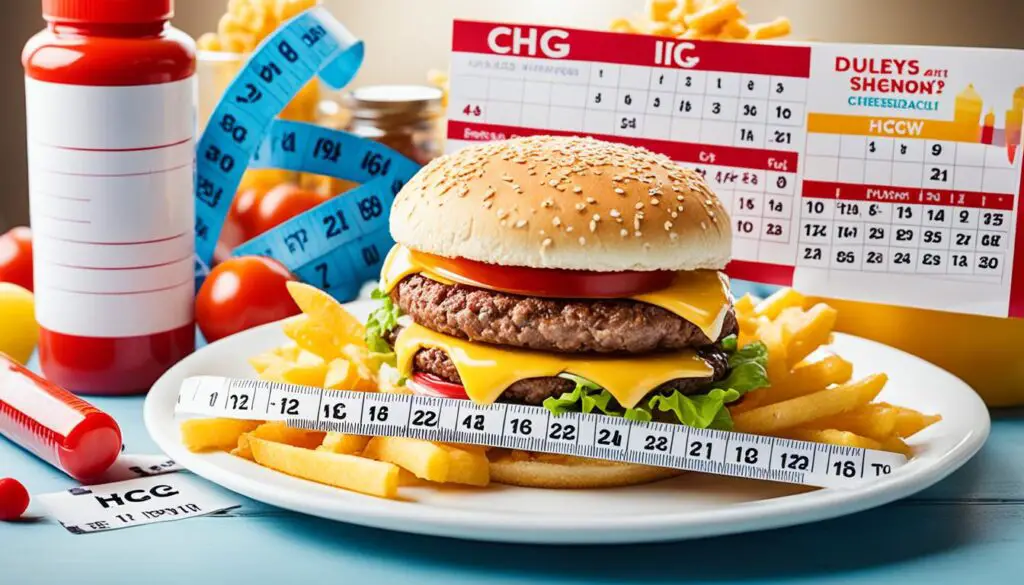
The loading phase sets the stage for a successful transition into Phase 2 of the HCG diet. By filling up the fat stores and allowing the HCG to build up in the bloodstream, the body is prepared to start using the stored fat for energy during Phase 2. The transition from the high-calorie loading days to the low-calorie phase may take a few days for the body to adjust.
During this transition, it is normal to experience some hunger and cravings as the body adapts to the reduced calorie intake. However, as the body starts utilizing the stored fat, these feelings should subside.
To ensure a smooth transition, it is important to stay committed to the diet plan and follow the guidelines of Phase 2. This phase involves consuming a very low-calorie diet, typically around 500 calories per day, while continuing with the HCG injections.
During Phase 2, it is essential to focus on consuming foods that are allowed on the HCG diet, such as lean proteins, vegetables, and fruits. It is also important to stay hydrated by drinking plenty of water throughout the day.
Preparing nutritious meals and planning ahead can help ensure a successful transition into Phase 2. By staying disciplined and listening to your body’s needs, you can continue on your journey towards achieving your weight loss goals with the HCG diet.
Conclusion
The loading phase of the HCG diet plays a crucial role in the journey towards successful weight loss. By understanding the purpose of this phase and following the guidelines, individuals can set themselves up for a more manageable and effective low-calorie phase. The consumption of high-fat foods during the loading phase helps fill up the body’s fat stores, which helps alleviate hunger during the subsequent phase.
During the loading phase, it is important to pay attention to your body’s signals and eat until you are comfortably full without overeating. This phase typically lasts for 2-3 days, providing ample time for the HCG hormone to build up in the bloodstream while preparing the body for the upcoming transition. As the loading phase concludes, individuals can move into Phase 2 with confidence, knowing that they have laid the foundation for successful weight loss.
By following the instructions and properly transitioning from the loading phase to Phase 2, individuals can embark on their weight loss journey with greater ease. The loading phase sets the stage for the body to utilize stored fat as an energy source during the low-calorie phase. With proper preparation and understanding, the HCG diet can be an effective tool for achieving weight loss goals.
FAQ
Why is the Loading Phase Necessary?
The loading phase is necessary for two main reasons. First, it allows the HCG hormone to build up in the bloodstream over 48-72 hours. Second, it helps fill up the fat stores in the body, preparing it for the low-calorie phase of the diet.
How to Do the Loading Phase?
During the loading phase, you should focus on consuming high-fat and high-calorie foods. Some examples include bacon, sausages, eggs, pastries, fast food, and full-fat dairy products. It is important to eat until you are comfortably full without overeating.
What to Expect During the Loading Phase?
During the loading phase, it is normal to experience temporary weight gain due to the increased calorie intake. However, this weight gain will quickly be lost once the low-calorie phase begins. Some individuals may have a huge appetite during this phase, while others may not. Staying hydrated by drinking plenty of water is also recommended.
Tips for a Successful Loading Phase?
To have a successful loading phase, focus on healthy high-fat foods such as full-fat organic dairy products, avocados, nuts, salmon, olives, and nut butters. Avoid overindulging in unhealthy foods and strive for balance. Staying hydrated and listening to your body’s signals are also important.
The Importance of Weighing Yourself?
Weighing yourself daily during the loading phase allows you to track your progress and see the effects of the high-fat food consumption. It is normal to see a temporary increase in weight, but this will quickly be reversed once the low-calorie phase begins. Weighing yourself daily helps monitor your weight loss journey and stay motivated.
Preparing for Phase 2?
After completing the loading phase, it is time to start Phase 2 of the HCG diet. It is important to be prepared by creating a meal plan and shopping list, understanding the foods allowed and not allowed during Phase 2, and continuing with the HCG injections.
The Transition to Phase 2?
The transition from the loading phase to Phase 2 may take a few days for the body to adjust. It is normal to experience some hunger and cravings during this transition, but they should subside as the body starts utilizing the stored fat for energy during Phase 2.



